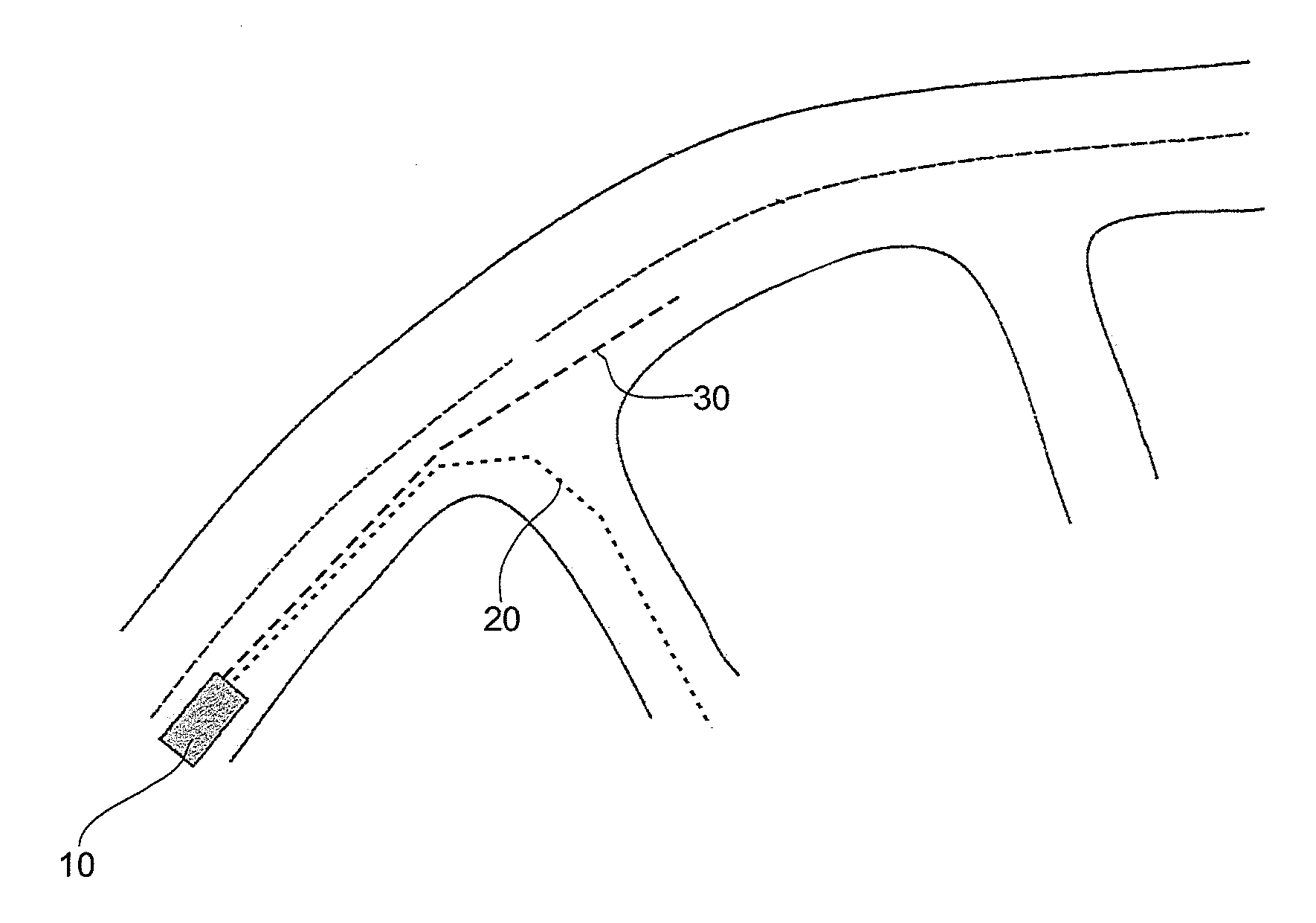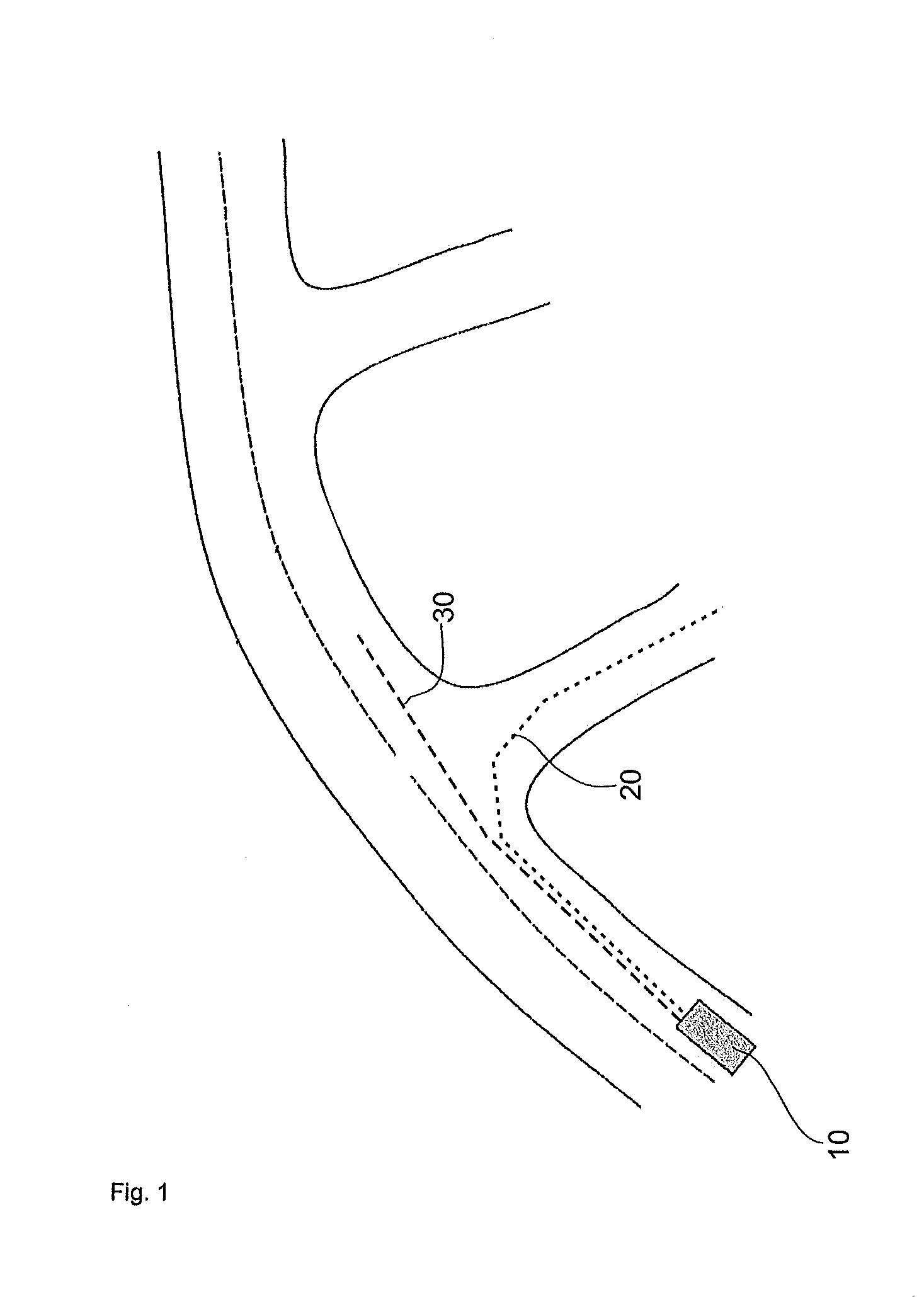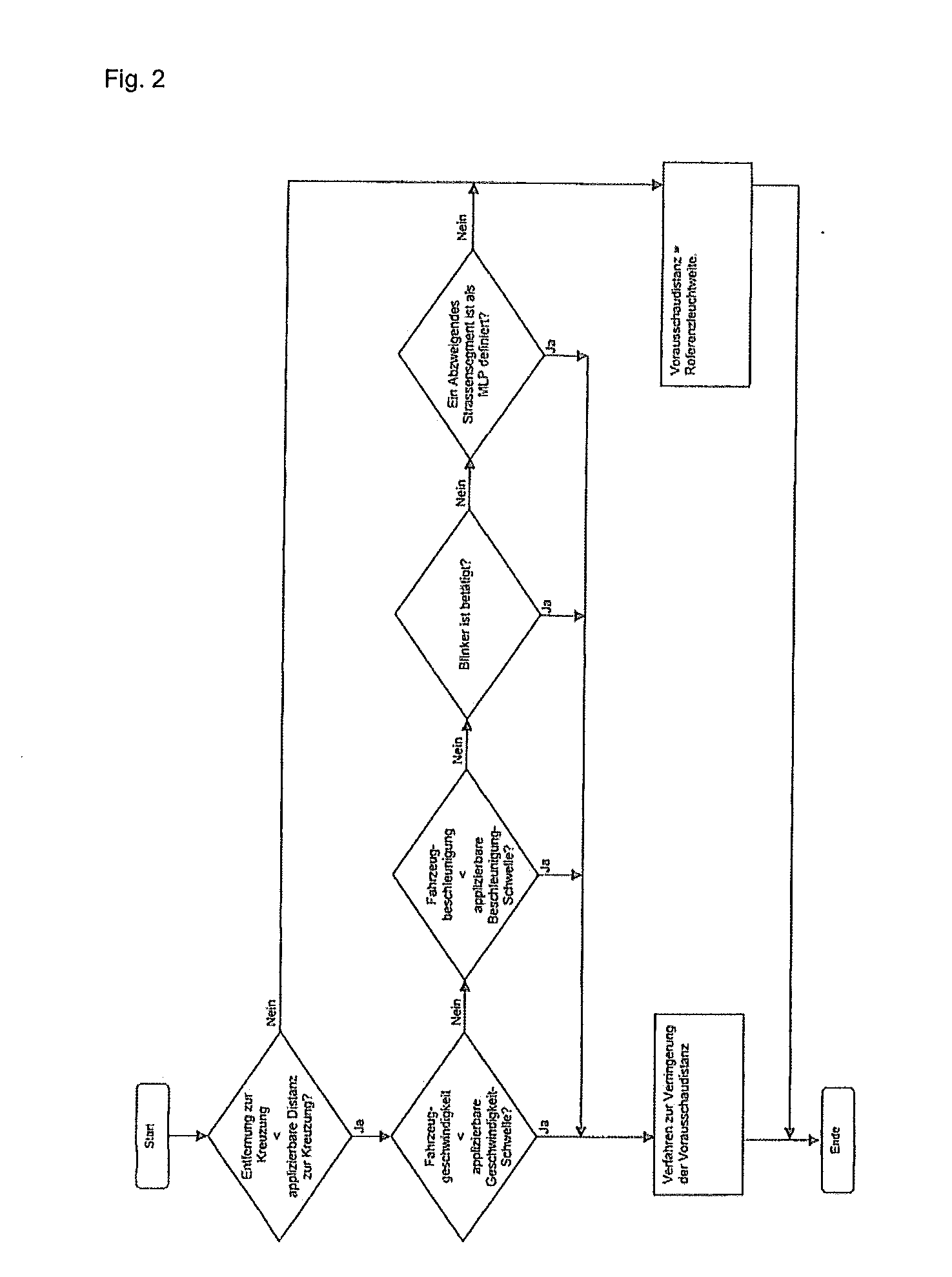Process for setting the pivotal angle of the curve headlights of a vehicle
a technology for curve headlights and headlight heads, which is applied in the direction of vehicle position/course/altitude control, process and machine control, instruments, etc., can solve the problems of inconsistent illumination of the area in front of the vehicle, relatively abrupt changes in the area that are illuminated, and the likelihood of the driver following the proposed route is very high, so as to accelerate the determination and reduce the error range. , the effect of accelerating the determination
- Summary
- Abstract
- Description
- Claims
- Application Information
AI Technical Summary
Benefits of technology
Problems solved by technology
Method used
Image
Examples
Embodiment Construction
[0042]In the following detailed description numerous specific details are set forth in order to provide a thorough understanding of the invention. However, it will be understood by those skilled in the art that the present invention may be practiced without these specific details. For example, the invention is not limited in scope to the particular type of industry application depicted in the figures. In other instances, well-known methods, procedures, and components have not been described in detail so as not to obscure the present invention.
[0043]FIG. 1 shows the basic situation of a vehicle 10 with a view from above. Vehicle 10 is located on a main road and is approaching two intersections. The first dashed line indicates the expected route 20, which indicates the vehicle will turn at the first intersection. Expected route 20 was determined based on at least one criterion, which e. g. could be a reduced speed by vehicle 10, a negative acceleration of vehicle 10, the actuation of ...
PUM
 Login to View More
Login to View More Abstract
Description
Claims
Application Information
 Login to View More
Login to View More - R&D
- Intellectual Property
- Life Sciences
- Materials
- Tech Scout
- Unparalleled Data Quality
- Higher Quality Content
- 60% Fewer Hallucinations
Browse by: Latest US Patents, China's latest patents, Technical Efficacy Thesaurus, Application Domain, Technology Topic, Popular Technical Reports.
© 2025 PatSnap. All rights reserved.Legal|Privacy policy|Modern Slavery Act Transparency Statement|Sitemap|About US| Contact US: help@patsnap.com



